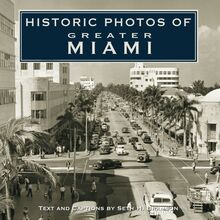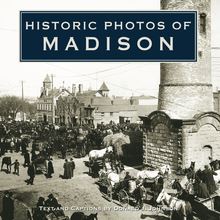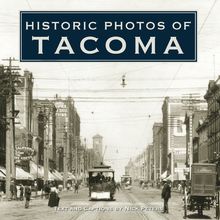Historic Photos of Fort Wayne , livre ebook
117
pages
English
Ebooks
2007
Vous pourrez modifier la taille du texte de cet ouvrage
Obtenez un accès à la bibliothèque pour le consulter en ligne En savoir plus
Découvre YouScribe en t'inscrivant gratuitement
Découvre YouScribe en t'inscrivant gratuitement
117
pages
English
Ebooks
2007
Vous pourrez modifier la taille du texte de cet ouvrage
Obtenez un accès à la bibliothèque pour le consulter en ligne En savoir plus
Publié par
Date de parution
01 septembre 2007
Nombre de lectures
0
EAN13
9781618586285
Langue
English
Poids de l'ouvrage
8 Mo
At the centennial of its founding by General Anthony Wayne in 1794, the city of Fort Wayne could boast prosperity and rapid growth as a leading industrial center of the Midwest. By the start of World War I, it had become the second largest city in Indiana.
The images collected here offer a comprehensive look into the history of this remarkable city. From the Wabash & Erie Canal at “Summit City” to the Nickel Plate Railroad, from the Johnny Appleseed marker in Swinney Park to the International Harvester truck plant, and from the Aveline Hotel to the Lincoln Bank Tower, Historic Photos of Fort Wayne captures unique and rare scenes of Fort Wayne through the lens of hundreds of historic photographs.
Published in striking black and white, these images communicate the historic events and everyday life of two centuries of people building a unique metropolis. Historic Photos of Fort Wayne is sure to captivate anyone curious about the city’s past, from the student of history to the local history buff.
Publié par
Date de parution
01 septembre 2007
Nombre de lectures
0
EAN13
9781618586285
Langue
English
Poids de l'ouvrage
8 Mo
HISTORIC PHOTOS OF
FORT WAYNE
An emotional crowd gathers in the Allen County Courthouse in November 1942 to see the names of loved ones and friends as the Honor Roll of area servicemen and women is unveiled.
HISTORIC PHOTOS OF
FORT WAYNE
T EXT AND C APTIONS BY S COTT M. B USHNELL
Turner Publishing Company
200 4th Avenue North Suite 950
Nashville, Tennessee 37219
(615) 255-2665
www.turnerpublishing.com
Historic Photos of Fort Wayne
Copyright 2007 Turner Publishing Company
All rights reserved.
This book or any part thereof may not be reproduced or transmitted in any form or by any means, electronic or mechanical, including photocopying, recording, or by any information storage and retrieval system, without permission in writing from the publisher.
Library of Congress Control Number: 2007923674
ISBN-13: 978-1-59652-377-7
Printed in the United States of America
08 09 10 11 12 13 14-0 9 8 7 6 5 4 3 2
C ONTENTS
A CKNOWLEDGMENTS
P REFACE
O N THE R IGHT T RACK (1860-1889)
P REVALENT P ROSPERITY (1890-1915)
G ROWTH AND G RIT (1916-1940)
V ICTORY S E NGINE (1941-1955)
D RIVEN TO C HANGE (1956-1979)
N OTES ON THE P HOTOGRAPHS
A group of Fort Wayne fire fighters pose alongside one of a dozen fire trucks they built between 1938 and 1942. They bought the chassis and engine from International Harvester and used their skills to fabricate and assemble everything from the seat to the rear bumper.
A CKNOWLEDGMENTS
This volume, Historic Photos of Fort Wayne , is the result of the cooperation and efforts of many individuals and organizations. It is with great thanks that we acknowledge the valuable contribution of the Allen County Public Library, the Allen County-Fort Wayne Historical Society, the Embassy Theatre Foundation, and the Library of Congress for their generous support.
We would also like to thank the following individuals for valuable contributions and generous assistance in making this work possible: Curt Wichern and John Beatty of the Allen County Public Library; Walter Font, curator, and Randy Elliott, collections assistant, of the Allen County-Fort Wayne Historical Society; Tom Castaldi of the Wabash Erie Canal Society; Sam Hyde and Tasha Bushnell of Hyde Brothers Books, Fort Wayne; Donald Weber of the Fort Wayne Firefighters Museum; Steven Cox and David Latta of Turner Publishing; and especially Barbara W. Bushnell.
The goal in publishing this work is to provide broader access to a set of extraordinary photographs. The aim is to inspire, provide perspective, and evoke insight that might assist officials and citizens, who together are responsible for determining Fort Wayne s future. In addition, the book seeks to preserve the past with respect and reverence.
With the exception of cropping images where needed and touching up imperfections that have accrued over time, no other changes have been made. The caliber and clarity of many photographs are limited by the technology of the day and the ability of the photographer at the time they were made.
We encourage readers to reflect as they explore Fort Wayne, stroll along its streets, or wander its neighborhoods. It is the publisher s hope that in making use of this work, longtime residents will learn something new and that new residents will gain a perspective on where Fort Wayne has been, so that each can contribute to its future.
- Todd Bottorff, Publisher
P REFACE
The area known as Fort Wayne, Indiana, was a thriving center of commerce for hundreds of years before European trappers, traders, and settlers discovered it. It was formed by two rivers-the St. Mary s from the south and the St. Joseph from the northeast-that seem to meander over great distances before coming together to become the Maumee River and its run to Lake Erie. These waterways enabled Native Americans to bring pelts, food, tools, and crafts to the convergence of the rivers from as far away as what would later become Wisconsin and western New York. Furthermore, a short portage led to the Wabash River, which could carry a canoe to the Ohio and Mississippi rivers. To the Miami peoples who controlled what they called Kekionga, the area where the Maumee formed was a glorious gateway.
There are three themes that resound throughout Fort Wayne s history. Commerce and transportation are two of them. Although the earliest settlers were attracted by the area s great groves of hardwood trees and arable land to grow crops, subsequent generations saw the promise of greater prosperity through the building of a canal to provide access for the Midwest to the Great Lakes and the Atlantic seaboard. In an engineering feat of almost heroic proportions, the Wabash Erie Canal was carved through Ohio and Indiana, with the first boats traveling between Fort Wayne and Huntington in 1835. The boatloads of commodities and workers in the next few years swelled Fort Wayne from a town to a small city by 1840.
The building of the canal through swamp and wilderness exemplifies the third theme in Fort Wayne s history: the persistence of engineers, inventors, and businessmen to recognize opportunities and bring new products to the marketplace. The canal was replaced by the railroads, which built roundhouses, locomotive shops, and repair facilities as well as freight yards and depots. The city s economic growth, particularly in heavy manufacturing, was sustained by the railroads for six decades. In the 1920s, Fort Wayne convinced International Harvester to build its new truck plant here, creating thousands of manufacturing and support-industry jobs.
Fort Wayne s inventiveness wasn t limited to transportation. Men and women with vision played key roles in the community and industry: whether it was Henry Paul and John Peters manufacturing the first contained washing machine; or Theodore Thieme daring to bring a state-of-the-art knitting mill-machinery and manpower-from Germany to Fort Wayne; or Samuel Foster recognizing the opportunity in designing a blouse for women that became the fashionable style of the Gibson Girl; or Philo Farnsworth pioneering the development of television. Success wasn t the product of leadership alone; the highly skilled workers of the area also attracted a number of industries that grew up in Fort Wayne, particularly the magnet wire industry and related products that form the basis for modern electrical technology.
The economic downturn in heavy manufacturing had an effect on Fort Wayne in the later half of the twentieth century. The demise of the railroads was a heavy blow and the north-south interstate highway that swept through the city did not create the immediate economic growth that rail-based commerce had a century before. The inability of manufacturing to adapt their older facilities to new production methods put Fort Wayne in with the rest of the so-called Rust Belt in the Midwest. The steady, at times alarming, loss of manufacturing firms deprived the city not only of high-paying jobs, but also of some of its pride. Retail activity in the downtown area-whose history is a central portion of this book-moved to the city-like malls on the perimeter of Fort Wayne.
Today, both the private and public sectors of the area are devoted to fostering new avenues to economic growth. Elements of Fort Wayne s heritage can be found in several new paths being followed by entrepreneurs. Universities and venture capital firms are investing in start-up firms in the health-care field that will benefit the nation s aging population. The transportation industry is experiencing growth in inter-modal transportation with truck trailers mounted on rail cars. And the rivers are being reclaimed environmentally as residents value them for their beauty, not just their economic efficacy. It will be interesting to see how Fort Wayne of the early twenty-first century is portrayed a century from now in whatever form image-and-text works of the future take.
Three firemen from the Vigilant Engine and Hose Company pose with the steam-powered Frank Randall Pumping Engine in the 1860s. Named after the mayor of that time, the engine was a marked improvement over the hand pumpers and would remain in service for decades.
O N THE R IGHT T RACK
(1860-1889)
When the Civil War began, Fort Wayne was a small county seat with 10,388 residents. Citizens were not fully in favor of the effort to quell the secession of the Confederate states, as was clearly evident in Abraham Lincoln s losing the popular vote in Fort Wayne in both 1860 and 1864. More than 4,100 men from the city and surrounding Allen County, however, went off to war in the Union Army. When the fighting was done in 1865, 489 of them had lost their lives.
Fort Wayne grew during the war, recording a 71 percent increase in population by 1870. The city prospered greatly, too. The first steam engine had arrived by canal boat in the 1850s and from this inauspicious beginning Fort Wayne became a leading railroad center. The Pittsburg (as it was spelled then), Fort Wayne, and Chicago Railroad built the city s first passenger station in 1855 and later added a roundhouse and shops for the building and repair of locomotives and cars. Six more railroads would serve Fort Wayne in the decade ahead, and in 1880 the Nickel Plate Railroad bought the canal right-of-way for its new line. As a result of this growth, ancillary businesses blossomed: the city became the world s largest supplier of railroad wheels and axles, and Kunkle Valve patented safety valves for steam engines, as two examples.
The railroads made Fort Wayne attractive to more than just industry. It was the first stop outside Chicago for many theatrical touring companies and therefore a convenient place to perform. The most famous stage personality of the period, Lillie Langtry, performed here in January 1883. Fort Wayne was one of the original members of the National Association of Base Ball Players (the forerunner of the National League), in part, because of its locale. By 1880, the














